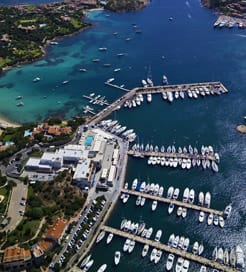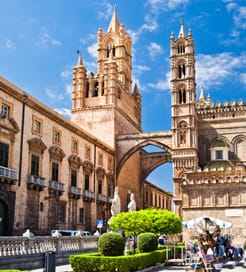
-
Recent Searches
Recent Searches
- My Account
- Customer Service
-
Canada

Ferry from Sardinia to Sicily
There is currently just the 1 ferry route running between Sardinia and Sicily operated by 1 ferry company – Grimaldi Lines. The Cagliari to Palermo ferry crossing operates weekly with a scheduled sailing duration from about 12 hours.
Whilst we’ve taken great care to ensure the information on this page is correct, as the frequency and duration of crossings on all routes can vary from time to time we’d advise that you get a live quote for current availability on this Sardinia Sicily crossing between Cagliari and Palermo.
Route map
About Sardinia:
Sardinia is an autonomous region of Italy and the second largest island in the Mediterranean Sea, after Sicily.
It’s an island of typical Mediterranean beauty, with white beaches, wild interiors, ancient villages and a complex history attracting large amounts of nature lovers each year.
Aside from beautiful coastal views and immaculate sandy shorelines, Sardinia offers a wide range of activities for those who love the great outdoors. You can navigate up limestone cliffs, meander through forested paths, stroll across picturesque bays and enjoy some excellent water sports.
The spring months would be ideal for holidaymakers looking for a bit more privacy, with the countryside ablaze with colour and fewer tourists around.
Given the island’s central location in the Mediterranean Sea, it is a useful gateway for a large number of destinations in Europe. There are many ports along its coastline, offering numerous routes to both international and domestic cities.
About Sicily:
The island of Sicily, located off the south coast of Italy is the largest of the numerous Italian islands and is surrounded by the Ionian, Tyrrhenian and Mediterranean Seas.
Parts of Sicily are on the same latitude as the coast of North African which results in a mild climate that makes the island an attractive year round destination, not just with domestic visitors from mainland Italy but abroad too. As with many of the Italian islands, the tourist season peaks in the summer months.
On Sicily's eastern coast you’ll find Mount Etna, the greatest active volcano in Europe and undoubtedly one of the regions attractions.
Perhaps in part due to its geographical location, but in the main because of its obvious attraction as a destination, Sicily features a host of regular ferry connections with neighbouring islands and the Italian mainland as well as international connections with the likes of Malta and Tunisia.

